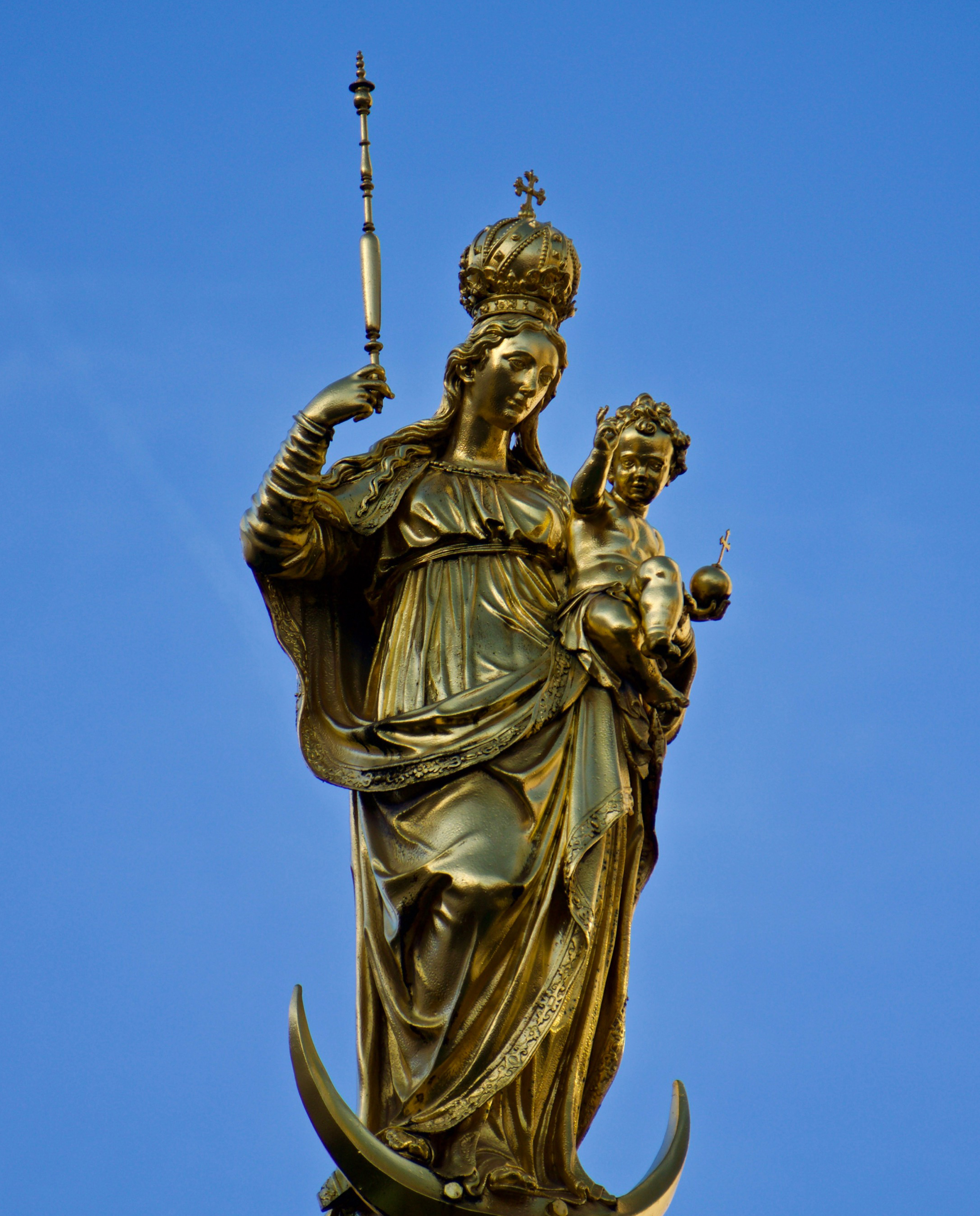Mariensäule on:
[Wikipedia]
[Google]
[Amazon]


 The Mariensäule (lit. 'Mary's Column') is a Marian column located on the
The Mariensäule (lit. 'Mary's Column') is a Marian column located on the


Marienplatz
Marienplatz ( English: Mary's Square, i.e. St. Mary, Our Lady's Square) is a central square in the city centre of Munich, Germany. It has been the city's main square since 1158.
History
During the Middle Ages, markets and tournaments were hel ...
in Munich
Munich ( ; german: München ; bar, Minga ) is the capital and most populous city of the German state of Bavaria. With a population of 1,558,395 inhabitants as of 31 July 2020, it is the third-largest city in Germany, after Berlin and Ha ...
, Germany
Germany, officially the Federal Republic of Germany (FRG),, is a country in Central Europe. It is the most populous member state of the European Union. Germany lies between the Baltic and North Sea to the north and the Alps to the sou ...
. Mary is revered here as '' Patrona Bavariae'' (Latin: Protector of Bavaria
Bavaria ( ; ), officially the Free State of Bavaria (german: Freistaat Bayern, link=no ), is a state in the south-east of Germany. With an area of , Bavaria is the largest German state by land area, comprising roughly a fifth of the total l ...
).
History
It was erected in 1638 to celebrate the end of Swedish occupation during theThirty Years' War
The Thirty Years' War was one of the longest and most destructive conflicts in European history, lasting from 1618 to 1648. Fought primarily in Central Europe, an estimated 4.5 to 8 million soldiers and civilians died as a result of battl ...
, to be precise, following a respective vow by Duke Elector Maximilian I of Bavaria if the ducal residential cities of Munich and Landshut would be spared from war destruction. The column is topped by a gold
Gold is a chemical element with the symbol Au (from la, aurum) and atomic number 79. This makes it one of the higher atomic number elements that occur naturally. It is a bright, slightly orange-yellow, dense, soft, malleable, and ductile ...
en statue
A statue is a free-standing sculpture in which the realistic, full-length figures of persons or animals are carved or cast in a durable material such as wood, metal or stone. Typical statues are life-sized or close to life-size; a sculpture t ...
of the Virgin Mary
Mary; arc, ܡܪܝܡ, translit=Mariam; ar, مريم, translit=Maryam; grc, Μαρία, translit=María; la, Maria; cop, Ⲙⲁⲣⲓⲁ, translit=Maria was a first-century Jews, Jewish woman of Nazareth, the wife of Saint Joseph, Jose ...
standing on a crescent moon as the Queen of Heaven
Queen of Heaven ( la, Regina Caeli) is a title given to the Virgin Mary, by Christians mainly of the Catholic Church and, to a lesser extent, in Anglicanism, Lutheranism, and Eastern Orthodoxy.
The Catholic teaching on this subject is express ...
, created in 1590. The figure was originally located in the Frauenkirche. ''Mariensäule'' in Munich was the first column of this type built north of the Alps
The Alps () ; german: Alpen ; it, Alpi ; rm, Alps ; sl, Alpe . are the highest and most extensive mountain range system that lies entirely in Europe, stretching approximately across seven Alpine countries (from west to east): France, ...
and inspired erecting other Marian columns in this part of Europe.For more and detailed pictures of the column see the respective German language article on wikipedia.de.
Features
At each corner of the column's pedestal is a statue of aputto
A putto (; plural putti ) is a figure in a work of art depicted as a chubby male child, usually naked and sometimes winged. Originally limited to profane passions in symbolism,Dempsey, Charles. ''Inventing the Renaissance Putto''. University of ...
, created by Ferdinand Murmann
Ferdinand is a Germanic name composed of the elements "protection", "peace" (PIE "to love, to make peace") or alternatively "journey, travel", Proto-Germanic , abstract noun from root "to fare, travel" (PIE , "to lead, pass over"), and "co ...
. The four putti are each depicted fighting a different beast, symbolizing the city's overcoming of adversities: war represented by the lion, pestilence by the cockatrice
A cockatrice is a mythical beast, essentially a two-legged dragon, wyvern, or serpent-like creature with a rooster's head. Described by Laurence Breiner as "an ornament in the drama and poetry of the Elizabethans", it was featured prominently in ...
, hunger or famine by the dragon and heresy
Heresy is any belief or theory that is strongly at variance with established beliefs or customs, in particular the accepted beliefs of a church or religious organization. The term is usually used in reference to violations of important religi ...
by the serpent.
The full inscription is as follows (with a translation)
References
Buildings and structures in Munich Tourist attractions in Munich Registered historic buildings and monuments in Bavaria {{coord, 48.1372, 11.5755, display=title